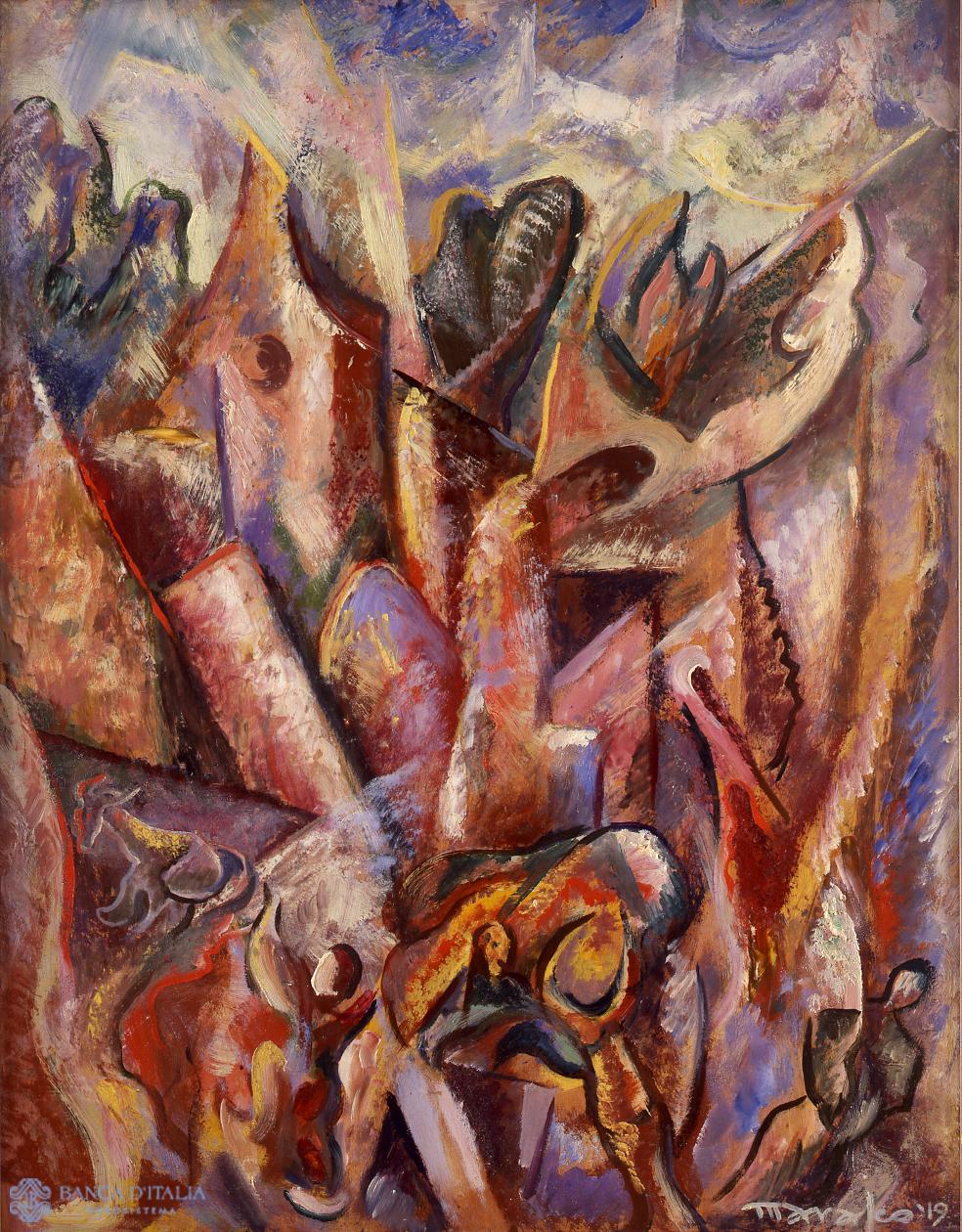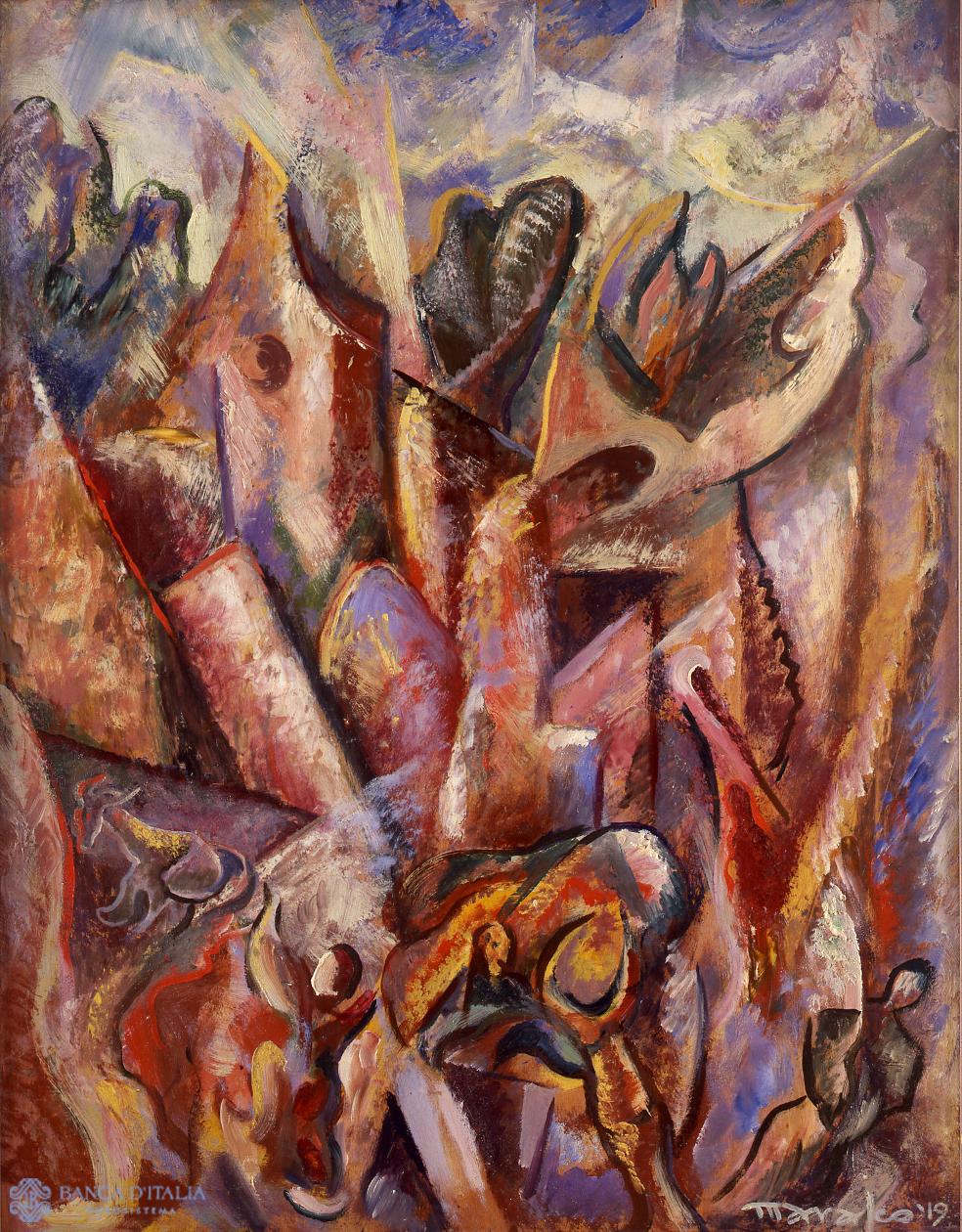Antonio Marasco was born in Nicastro (Lamezia Terme) in 1896 and died in Florence in 1975, the city to which he moved in 1906 with the rest of his family. After finishing his technical studies, in 1912 he enrolled at the Liceo Artistico and then at the Academy of Fine Arts, where he studied under Galileo Chini. By 1913 he had already begun to frequent Futurist circles in the city made up of the then very young Primo Conti, besides Rosai, Nannetti and Pettoruti. In 1914 in Berlin he met Filippo Tommaso Marinetti who invited him to travel with him to Russia where Marasco met artists like Malevic and Puni and sold one of his paintings to the well-known collector I. Morosov. On returning to Florence he met Umberto Boccioni and after the First World War, during which he fought as a volunteer in the Engineer Corps, he met Balla and Bragagli. In 1919 he destroyed 27 canvases on show at the Academy of Fine Arts in protest against “Traditionalist Art”, an action which led to his exclusion from all the academies in Italy, while Marinetti described him as a “mystic of action”. His work, inspired by the “plastic dynamism” of Boccioni’s work, was exhibited in Berlin in 1921 as well as in Turin and Dusseldorf. He was close to the Cubist-Futurist style in the 1920s and to Aeropittura, exhibiting at the Venice Biennale in 1932. In the following year he published the Manifesto dei Gruppi Futuristi Indipendenti, entering into an argument with Marinetti. As a result of having belonged to the Repubblica Sociale Italiana in 1943 he was tried and found guilty of collaboration. In 1949 he moved to Rome where he exhibited his work in various galleries.
You are in:


